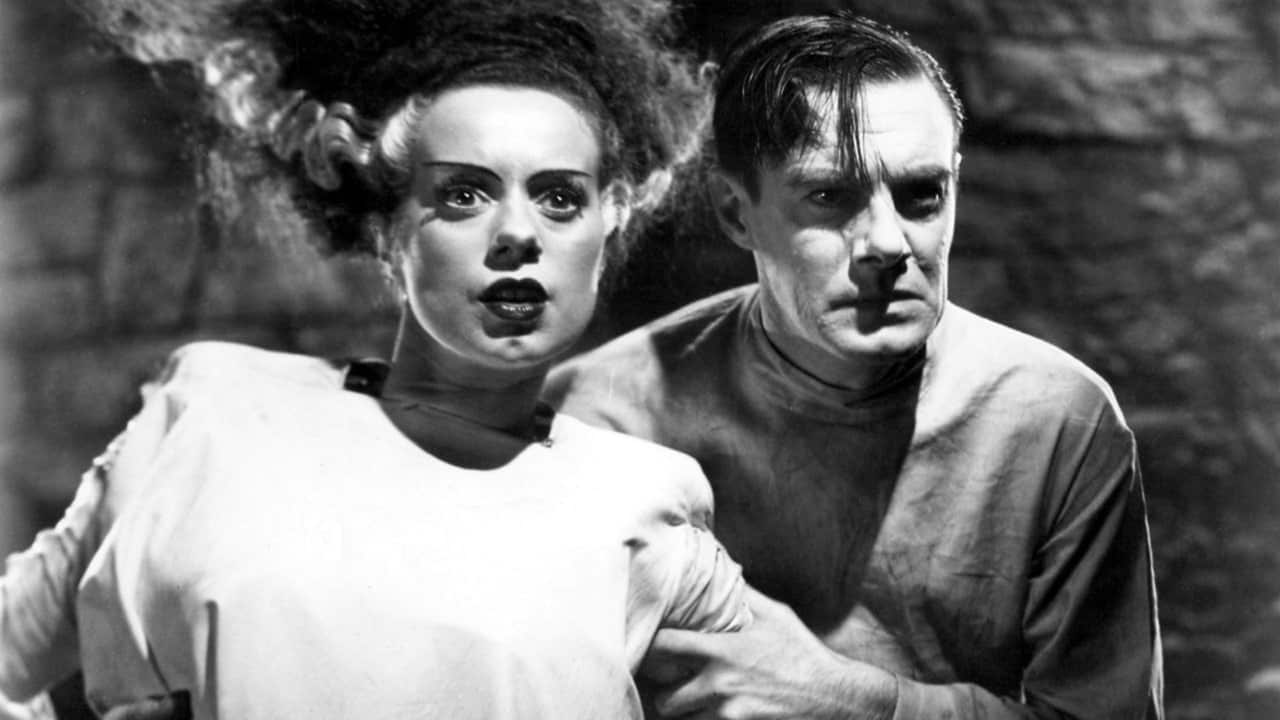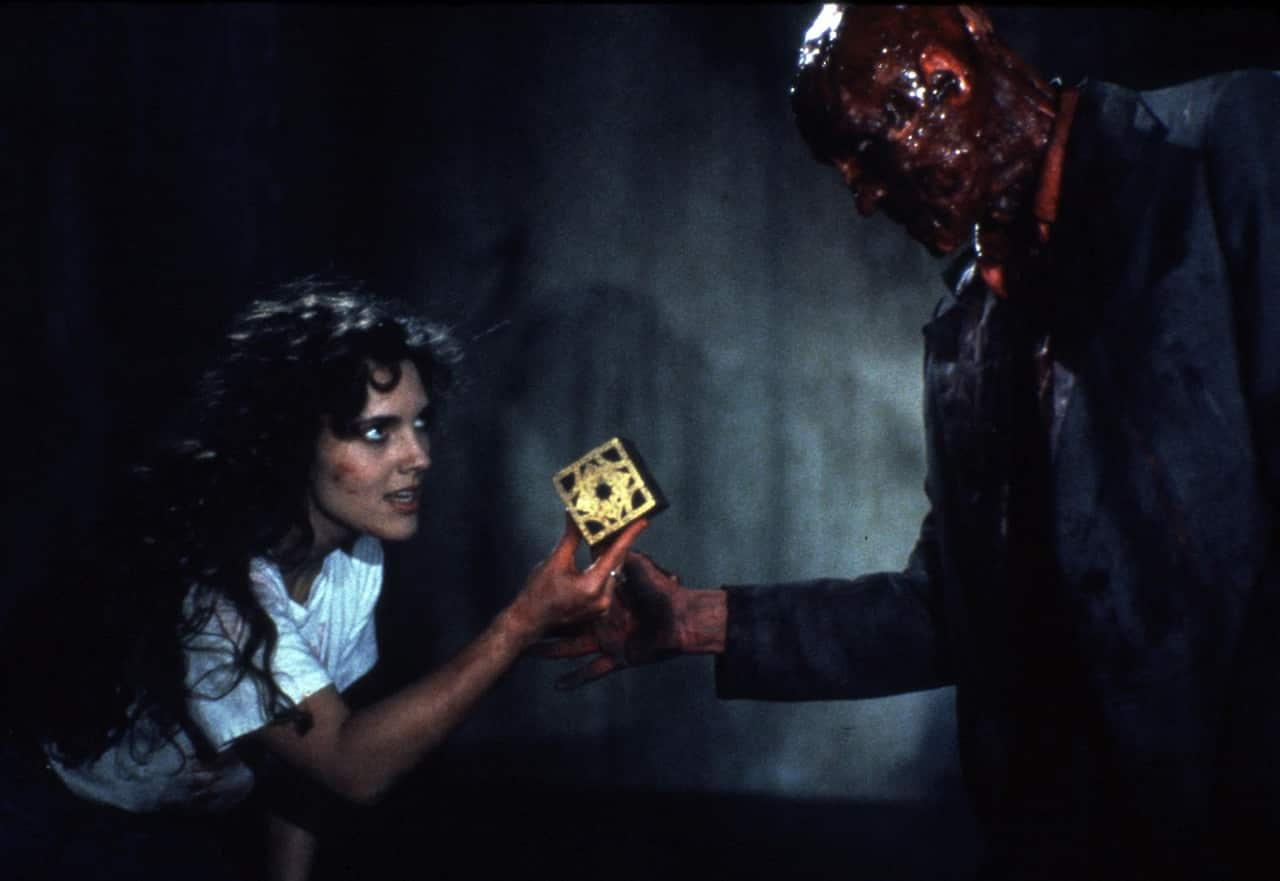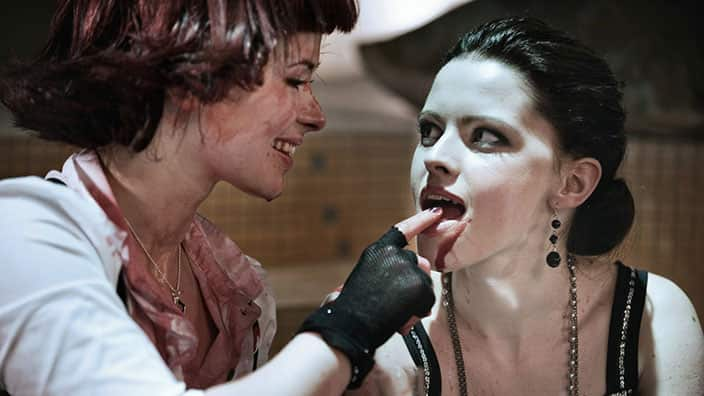Sex and death go together like bacon and eggs. The ancient Greeks knew it when they meditated on the connection between Eros and Thanatos, and Master of Horror John Carpenter knew it when he recently said of the latest sequel to his slasher classic, Halloween, “You go to the movies with your girlfriend and I guarantee if you see this new movie, she’ll be cuddling with you like crazy!”
WATCH: Spend Halloween with SBS VICELAND - Stylish supernatural horror The Witch airs at 8:30pm followed by Peter Jackson's The Frighteners at 10:20pm
Horror is sexy because the proximity to death fires up the urge to procreate, the wires often get crossed, and canny creators know to push those adjacent buttons hard.
But more than that, horror, like other “low” genres and forms, has long been a place to explore taboos and forbidden desires. Now, in this day and age, there is very little that you can’t show on screen, but back in the day things were a little more strait-laced and all kinds of things we now take for granted were deemed not fit for the sensitive eyes of the average punter – like homosexuality, for instance. Enter horror pioneer James Whale who, like many other LGBTQI filmmakers then and now, worked hard to smuggle a surfeit of queer content into the fleapits right under the nose of the censors. The British born Whale was openly gay at a time when that was really unusual, and he brought his queer sensibilities to bear on Universal’s seminal 1930s Frankenstein films, most notably 1935’s Bride of Frankenstein. To modern eyes the film is openly camp, with Ernest Thesiger’s mad scientist Doctor Pretorius an ageing queen tempting Colin Clive’s Henry Frankenstein to dark deeds in the lab – and, by inference, elsewhere.
Enter horror pioneer James Whale who, like many other LGBTQI filmmakers then and now, worked hard to smuggle a surfeit of queer content into the fleapits right under the nose of the censors. The British born Whale was openly gay at a time when that was really unusual, and he brought his queer sensibilities to bear on Universal’s seminal 1930s Frankenstein films, most notably 1935’s Bride of Frankenstein. To modern eyes the film is openly camp, with Ernest Thesiger’s mad scientist Doctor Pretorius an ageing queen tempting Colin Clive’s Henry Frankenstein to dark deeds in the lab – and, by inference, elsewhere.

Bride of Frankenstein... is alive! Source: Universal
One avowed fan of Whale’s work is another gay filmmaker (and author, and artist, and…) Clive Barker, who paid tribute to Whale by producing the 1992 Whale biopic Gods and Monsters, which saw Sir Ian McKellan play the aged director, with Brendan Fraser as his gardener and object of his affection. When Barker made his mark as a filmmaker with his 1987 feature debut, Hellraiser, gay themes weren’t the scandal they once were, but even the video nasty-immured audiences of the time were taken aback by the film’s gleefully sadistic, transgressive tone. Based on Barker’s novella, The Hellbound Heart, Hellraiser introduced a public grown weary of de rigueur supernatural slashers to the Cenobites, an order of demonic BDSM aficionados who, once summoned by solving the film’s iconic puzzle box, proceeded to submit their summoner to pleasures and pains beyond imagining.
When Barker made his mark as a filmmaker with his 1987 feature debut, Hellraiser, gay themes weren’t the scandal they once were, but even the video nasty-immured audiences of the time were taken aback by the film’s gleefully sadistic, transgressive tone. Based on Barker’s novella, The Hellbound Heart, Hellraiser introduced a public grown weary of de rigueur supernatural slashers to the Cenobites, an order of demonic BDSM aficionados who, once summoned by solving the film’s iconic puzzle box, proceeded to submit their summoner to pleasures and pains beyond imagining.

1987's Hellraiser Source: Supplied
It was pretty heady stuff – being chopped into offcuts by Jason or Michael Myers was one thing, but the mind fairly reeled at what pinhead and his fellow, ah, 'sophisticates' might do to you with all those chains and hooks and needles, their pale flesh gleaming through the rents in their bondage suits. Skipping gleefully over those unspoken but nonetheless concrete boundaries was, of course, the whole point of the exercise – if what once was forbidden becomes commonplace, new extremes must be found, and Barker’s film remains an absolute landmark of transgressive horror cinema.
Barker is British, which might be the least unusual of his personal attributes, but it’s interesting to contrast his treatment of sexuality with the way American director David Robert Mitchell tackles the subject almost 30 years later in his acclaimed 2014 horror, It Follows. While Hellraiser highlighted the risks of going too far in the quest for prurient pleasure, It Follows takes up the puritanical tradition of American horror in punishing anyone who dares do the naughty. Like the supernatural serial killers of old, the invisible demon in It Follows stalks and kills pretty young people who have dared to have sex, effectively behaving like a kind of unholy STD. While the idea of a haunting being passed around like a nasty venereal virus is an interesting wrinkle and It Follows certainly delivers the scares, it’s still walking the same path that John Carpenter (Halloween), Tobe Hooper (The Texas Chain Saw Massacre), and especially Sean S. Cunningham (Friday the 13th) trod back in the day.
Watch 'Halloween'

Source: SBS Movies

Source: Supplied
And then there’s Tomas Alfredson’s Let the Right One In, adapted in 2008 from the novel by John Ajvide Lindqvist, which follows bullied Swedish schoolboy Oskar (Kåre Hedebrant) as he learns that the new girl in his apartment complex, Eli (Lina Leandersson), is a vampire.
Watch 'Let The Right One In'
While child vampires are nothing too new – we’ve seen them in Interview with the Vampire and even sleepover staple The Lost Boys – they’ve never been so disturbingly presented as in Alfredson’s icy horror, which delves deep into the psychology of its characters to explore both sexuality and gender. While Oskar is a pre-ten child, Eli is centuries old, and while their friendship is at times touching, there is an ever-present predatory element to it that is deeply disturbing – this is, when the physical elements are stripped away, an adult grooming a child.
Or is it? Let the Right One In’s unceasing ambiguity is what makes it so compelling and so uncomfortable, and the state of Eli’s personhood is never made explicit. What is strongly hinted at – and outright stated in the source novel – is that she was not born a girl, complicating an already provocative on screen relationship with a queer reading. A morally ambiguous, pre-teen gender-fluid love story is not something we tend to see in mainstream cinema – but in the shadowed halls of horror we are free to explore.




